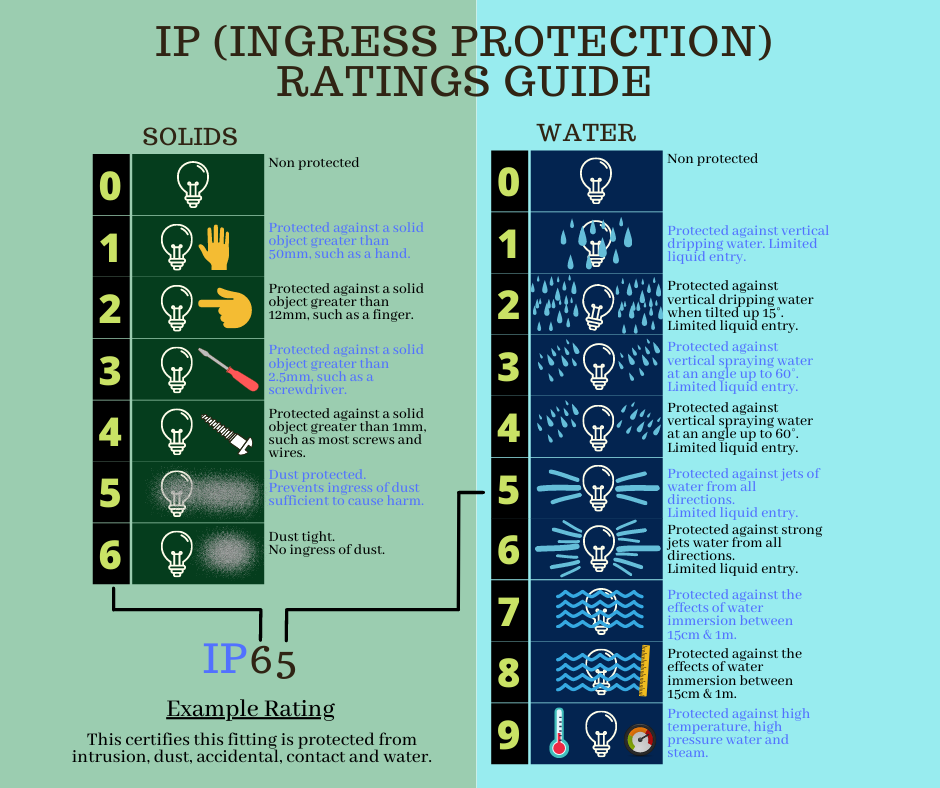Outdoor lighting is more widely accessible than ever before with the increasing popularity and availability of low-voltage lighting and LED technology. Those lights need to have certain IP ratings depending on where they’re installed and how they’re used. Different projects and landscapes need different IP ratings, so in this blog we’ll take you through the various IP ratings for outdoor lighting and provide you with all the information you need to choose the best option for you.
What does IP Rating mean?
‘IP’ means Ingress Protection and all lights and light fittings are rated using this. The IP rating for a light tells us how well it’s effectively protected from outside elements including solids and liquids. It helps determine where lights can be placed and how much they’re able to be in contact with those elements.
For clarification, the IP ratings are always indicated by the ‘IP’ initials followed by two digits. The first digit relates to the level of protection from solid objects which a light source has, with the second one indicating how resistant to water the light is. The higher the digits, the more the light source is protected, whilst the digits are always in relation to outdoor lighting.
Why do Lights Require Different IP Ratings?
As you might expect, garden lights can be in contact with lots of different external substances and objects, so it makes sense, especially for safety purposes, proper protection is given to prevent lights from becoming damaged and becoming dangerous.
Outdoor lights will meet many external environmental forces including dust, dirt, wind, and rain as well as accidental damage. All of this can and will cause damage and malfunction to outdoor lighting if it doesn’t have the proper levels of protection.
For example, a path light will need sufficient protection from water contact and potential physical force but won’t need protection from complete submersion. In contrast, a pool light will need to be protected from full submersion but isn’t as likely to be in contact with tools and any sharp objects. It’s for this reason why IP ratings can be different depending on the intended use of a light.
What IP Rating does my Outdoor Light Require?
Standard Garden Lights: We’re talking uplights, tree lights and path lights and they need to have a minimum rating of IP44 or higher. The 4 ratings will make sure lights are protected against splashing and significant water contact, as well as protecting them from physical contact too.
Path, Step & Deck: These lights need higher levels of protection because they’ll often come under pressure from being walked on and from water when jet washing. You want to be aiming for a rating of IP65 which will give the protection your decking needs from contact by humans, dust and other harmful particles.
Water Lights: For lighting ponds, water features or swimming pools, lights used need to have a minimum rating of IP68. This means your underwater lighting will be of a low voltage and will be sufficiently waterproofed and able to withstand high pressure surrounding it.
By following the guidance in this blog for IP ratings, you will ensure safe and well-protected lighting in your garden. See the full range of professional Elipta IP rated lighting solutions on our website.
